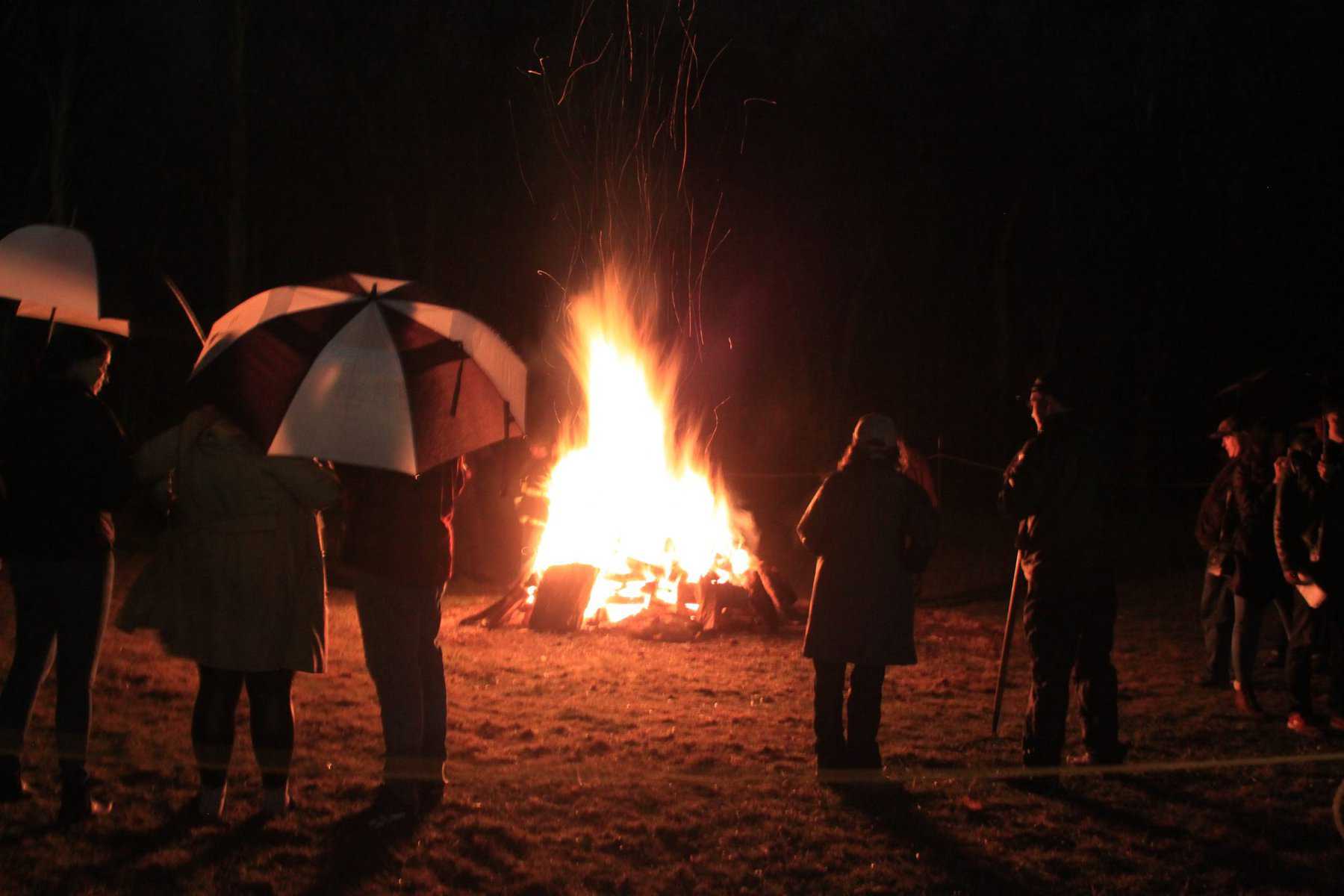Celebrating the good and the bad, a small crowd huddled under umbrellas on a damp New Year’s Eve for the first in-person Hogmanay bonfire at the historic Brearley House since 2019.
The “good” was a real bonfire, and not the virtual Hogmanay New Year’s Eve bonfires that were held in 2020 and 2021. The live bonfires were canceled because of the pandemic.
The “bad” was all of the bad things that attendees wrote on slips of paper that happened to them in 2022. Attendees tossed those “bad things” into the bonfire in keeping with the tradition of Hogmanay, which has its roots in Scotland.
Standing in the mist, bagpiper Graham Kronk set the tone for the evening as he played “The Road to the Isles” – a traditional Scottish tune – on his set of bagpipes. He stood at the top of the small rise and played more tunes as fire master Michael Knab lit the bonfire.
Knab, who is the scoutmaster for Boy Scout Troop 28, and Lawrence Historical Society President Katherine Meeker-Cohen welcomed the attendees and thanked them for coming out on a drizzly night.
“This makes it more of a celebration,” Meeker-Cohen said.
Kellie Rushinski, who lives in Ewing Township, said she had attended the Hogmanay bonfire in 2019, which was the last year before it was canceled.
“I’m glad it’s back. I love tradition. I wrote a lot of bad things on my list – bad things that happened this year [in 2022] that I hope they don’t come back,” Rushinski said.
For Kathy Syp of Princeton, Hogmanay helps her to stay in touch with her Scottish roots.
“It’s a wonderful experience. I try to do it (attend) every year,” she said.
Tim Syp agreed that it is a great tradition.
“You throw things into the fire that you don’t want to follow you next year,” Syp said. He declined to say what was on his list because “it’s a secret, if you want it to come true.”
Abby Markoe’s 3-year-old son had a little different “take” on the “toss the list of bad things in the fire” tradition. Markoe lives in Baltimore, Md., and was visiting family in her hometown of Lawrence Township.
“We encouraged Alex to make a list. On his list was ‘not to hit his (older) sister.’ He wrote it down and we threw it into the fire. Then he turned to me and said, ‘I can still hit her, Mom,’” Markoe said with a laugh.
The Hogmanay bonfire has been a tradition of the Lawrence Historical Society since 1997. It began as a way to showcase the Brearley House, which was built in 1761, while it was undergoing restoration by Lawrence Township. It proved to be so popular that Hogmanay became an annual event.
The first bonfire was suggested by Lawrence Historical Society member Joe Logan, who recalled similar bonfires that took place in his childhood hometown of Savannah, Ga.
The bonfires were a New Year’s Eve community celebration to mark the end of the holiday season with the burning of the year’s Christmas trees. Lawrence Historical Society members researched bonfires and discovered the customs of Hogmanay – and the tradition of the New Year’s Eve bonfire was born.
No one knows the origin of the name Hogmanay, according to www.hogmanay.net. It is the Scottish word for “the last day of the year,” and it may have entered the Scots language from the French “hoguinane” – a New Year’s gift; the Gaelic “oge maidne” – the new morning; or the Anglo-Saxon “haleg monath” – holy month.
The various local traditions found in Scotland that are centered around fire hark back to the ancient past. In pagan winter celebrations, fire symbolized the newly resurgent sun come back to the land, and it was believed to ward off evil spirits dwelling in the darkness.
Fire still plays a significant role in Hogmanay celebrations, with bonfires, torchlight processions and fireworks still popular in Scotland.
The most important aspect of any Hogmanay celebration is cleansing for the new year. This includes paying off old debts, washing the house and banishing thoughts of bad happenings from the previous year.

